Idaho’s magnificent natural landscapes are home to many rivers, mountains, hillsides, and a wide variety of plants. Among Idaho’s native plants and non-native species are some very poisonous varieties. Being aware of dangerous plants in the US and the Gem State could save lives. So let’s explore eight of the most dangerous plants in Idaho and the symptoms of plant poisoning they could cause. These Idaho plants are highly toxic for humans, pets, and livestock and, in many cases, could be fatal if ingested.
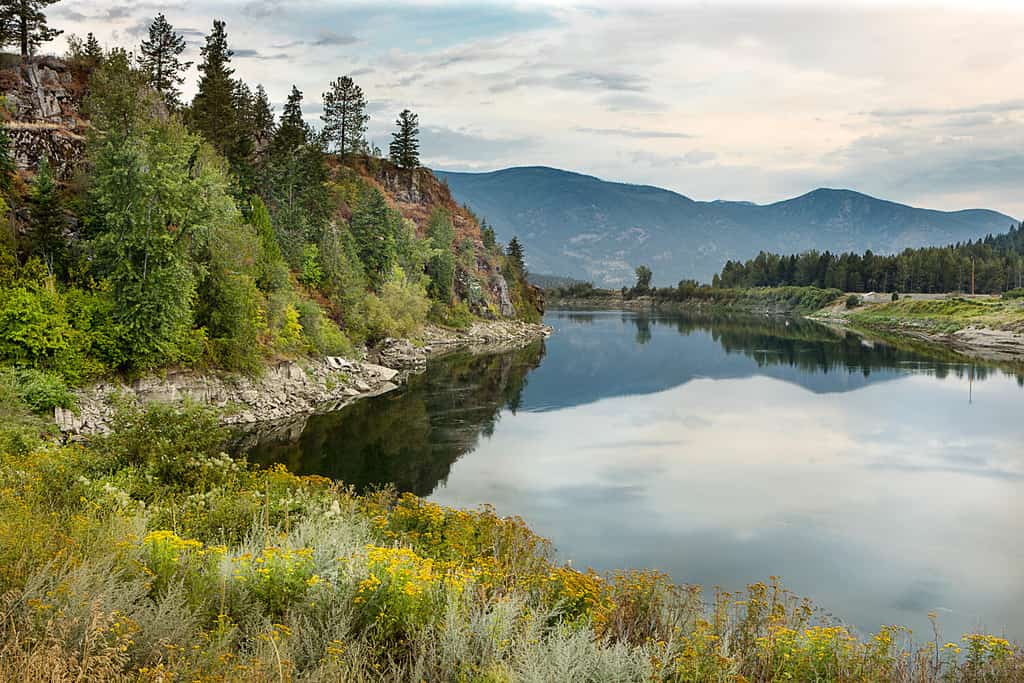
Idaho’s magnificent terrain is full of diverse plant life, including dangerous poisonous plants.
©Gregory Johnston/Shutterstock.com
1. Spreading Dogbane (Apocynum androsaemifolium)
The spreading, or fly-trap, dogbane plant is a branching perennial herb that produces pointed oval leaves and pink and white flower clusters. The flowers look like tiny bells with curled edges, and the leaves have tiny hairs underneath. This 2-foot tall plant also produces a milky sap loved by monarch butterfly caterpillars but is toxic to humans and other mammals.
Spreading dogbane grows in waste and marginal areas, like roadsides, fields, and fence rows. Though spreading dogbane has long been used in Native American medicine, this plant’s toxicity is high and very dangerous.
Spreading Dogbane Toxicity and Symptoms
The spreading dogbane plant contains toxic resins and cardiac glycosides that can cause mild to severe symptoms based on the level of plant consumption. Its roots also contain a cardiac stimulant called cymarin. Mild symptoms of spreading dogbane poisoning include diarrhea, nausea, and vomiting. Severe symptoms of plant poisoning could lead to nausea, vomiting, stomach pain, an irregular heartbeat, weakness, and potentially fatal cardiac arrest.

Spreading dogbane plants have delicate flowers and toxic compounds that could be fatal if ingested.
©Ashley Swanson/Shutterstock.com
2. Myrtle Spurge (Euphorbia myrsinites)
Myrtle spurge is a succulent plant with a poisonous milky sap, small star-shaped flowers, and lance-shaped leaves that spiral up its 4-6 inch tall stalks. Spurge plants grow in disturbed areas, hillsides, fields, and pastures.
This plant has an interesting look that once made it popular for landscapes. Unfortunately, myrtle spurge has become an invasive, noxious weed. And you never want to touch this poisonous plant without wearing gloves because of its toxic sap.
Myrtle Spurge Toxicity and Symptoms
The milky sap of myrtle spurge contains resiniferatoxin, which can cause painful burning of the skin. Also, transferring this toxin from your hands to your eyes, nose, or mouth could cause painful burning sensations in the mucus membranes. Symptoms of myrtle spurge poisoning include a skin rash, redness, swelling, itching, burning, and blistering. In addition, getting myrtle spurge toxin in your eyes could cause temporary or permanent blindness.
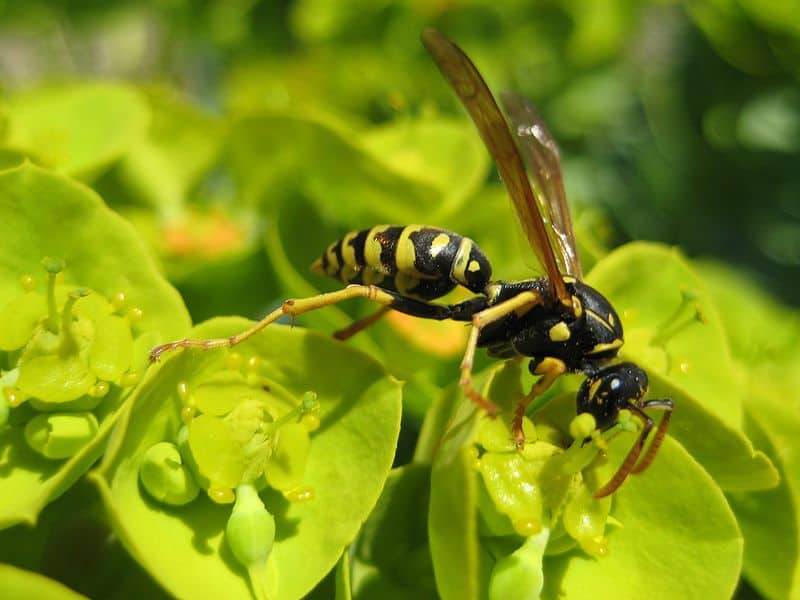
Myrtle spurge is a succulent plant with toxins that can cause blindness if transferred to your eyes.
3. Mountain Laurel (Kalmia latifolia)
The mountain laurel shrub adds a pop of pink and white color to rocky landscapes. This shrub is one of the most dangerous plants in Idaho because ingesting any part of it could be deadly. But it sure is a pretty sight where it grows in wooded areas because of its unique hexagonal flowers.
Mountain laurel is an evergreen shrub that can grow up to 30 feet tall. It’s a common plant along the east coast, but the US Forest Service lists mountain laurel as one of the poisonous plants growing in North Idaho.
Mountain Laurel Toxicity and Symptoms
The grayanotoxins in mountain laurel plants make them highly poisonous. If you touch them, you may develop minor skin inflammation and rash. However, the symptoms could become life-threatening if you ingest any part of mountain laurel plants. Symptoms of mountain laurel poisoning could include weakness, drowsiness, nausea, vomiting, burning sensations, coma, and death.

Mountain laurel is a beautiful shrub and one of the most dangerous plants in Idaho.
© lenic/Shutterstock.com
4. White Baneberry (Actaea pachypoda)
The white baneberry, also known as “Doll’s Eyes,” features clusters of small white flowers and distinctive white berries with black dots resembling eyes. In addition, white baneberry leaves grow in a 3-leaflet pattern on plants that reach up to 4 feet tall.
White baneberry plants thrive in shady areas, like woodlands and forests. And this dangerous plant in Idaho contains toxins that can harm the heart and other organs if ingested.
White Baneberry Toxicity and Symptoms
Eating any part of the white baneberry plant could be fatal because of the ranunculin (an unstable glucoside) and cardiac toxins it contains. Symptoms of baneberry poisoning could include stomach pain, nausea, vomiting, dizziness, an irregular heartbeat, delirium, and circulatory failure that leads to death.
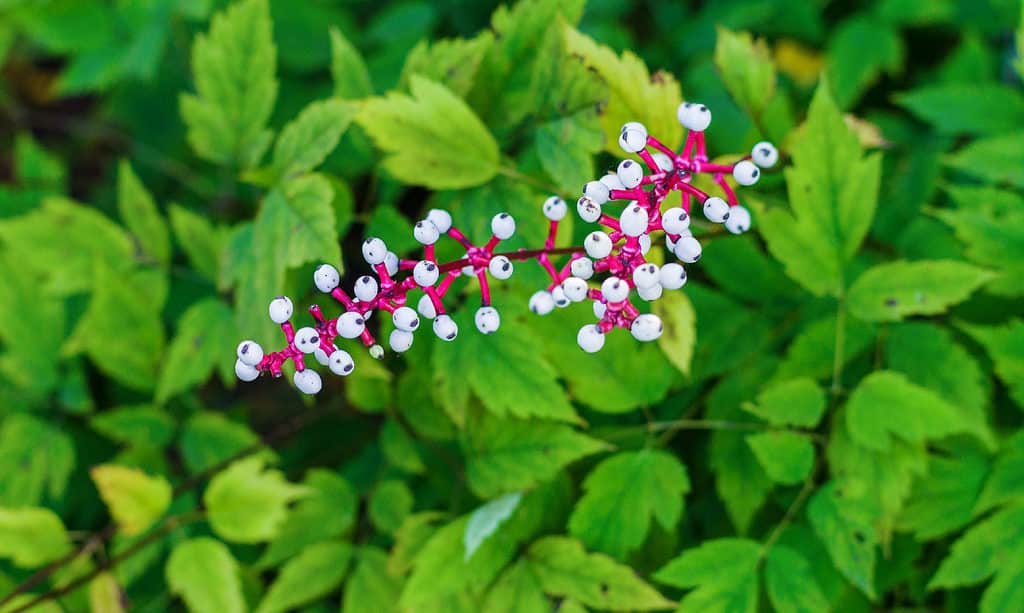
White baneberry plants have distinctive berries that are highly poisonous if ingested.
©Alex Polo/Shutterstock.com
5. Death Camas (Zigadenus spp.)
Many of the most dangerous plants in Idaho contain toxic alkaloids, and death camas are no exception. The death camas plant is non-branching, has grass-like leaves, and produces small clusters of white flowers with yellow stamens at the tops of its 2-3 foot stalks. Death camas’ habitats include forests, open woodlands, foothills, valleys, and coastal areas with moist soil.
Death Camas Toxicity and Symptoms
The entire death camas plant, especially the bulbs, contains toxic alkaloids, including one called zygacine. Symptoms of ingesting death camas include burning sensations, excessive salivation, nausea, vomiting, stomach pain, an irregular heartbeat, difficulty breathing, confusion, coma, and death.
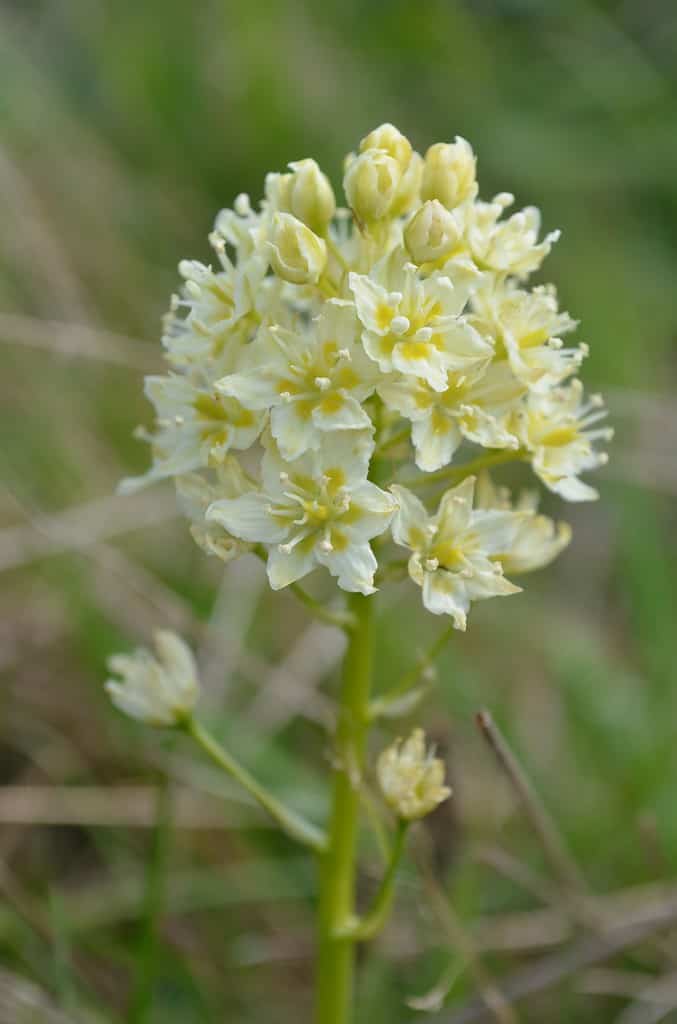
Ingesting any parts of the death camas plant could cause difficulty breathing, coma, and death.
©Bureau of Land Management Oregon and Washington / CC BY 2.0 – License
6. Water Hemlock (Cicuta maculata)
Water hemlock is a highly poisonous plant with some of the same physical traits as Queen Anne’s lace or wild carrot plants. So it’s essential to know when you’ve come across deadly water hemlock instead. The water hemlock’s stems are hollow, long, and spotted. Additionally, it grows umbel clusters of small white flowers at the tops of its stems. Water hemlock plants can reach 3-8 feet tall and thrive in wet habitats like marshes, drainage ditches, and the banks of streams and Idaho lakes.
Water Hemlock Toxicity and Symptoms
Eating any part of the water hemlock plant could cause severe and fatal symptoms. Water hemlock contains cicutoxin, an unsaturated alcohol, which is highly toxic to the central nervous system. Signs of water hemlock poisoning could include nausea, vomiting, dilated pupils, seizures, convulsions, respiratory failure, and death.
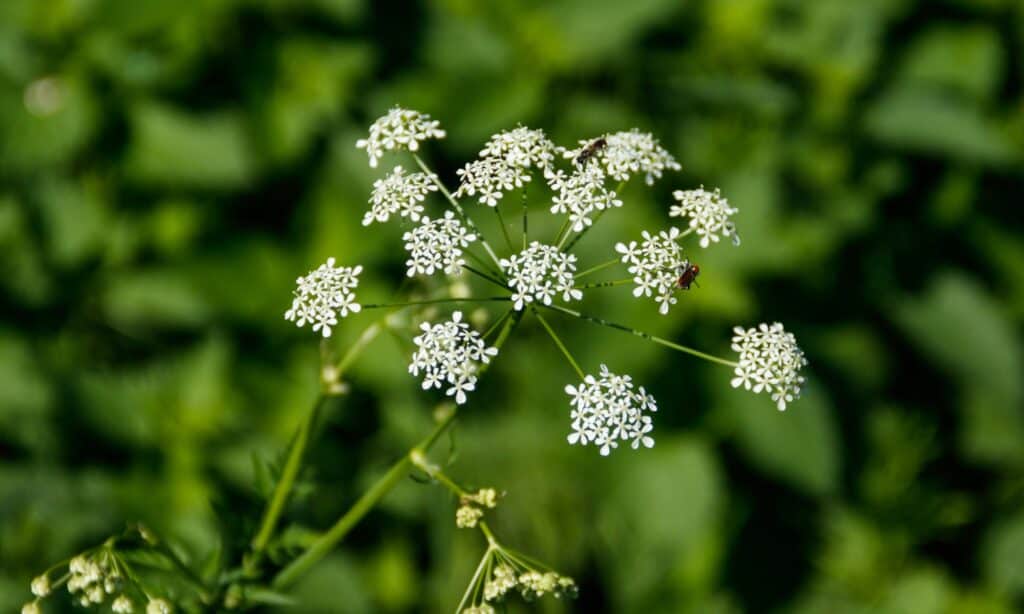
Plant poisoning symptoms from ingesting water hemlock are often life-threatening.
©iStock.com/OlyaSolodenko
7. Poison Hemlock (Conium maculatum)
Hazardous poison hemlock plants grow quite tall (4-9 feet) and look similar to water hemlock plants. They feature white umbrella-shaped clusters of flowers and fern-like leaves. In addition, poison hemlock produces green seed pods that mature to brown.
Poison hemlock grows well in areas with wet soil, like marshes, riverbanks, roadsides, and disturbed areas.
Poison Hemlock Toxicity and Symptoms
The poison hemlock contains several toxic compounds, including coniine, which affects the nervous system and can be fatal if ingested. Symptoms of ingesting poison hemlock include weakness, dry mouth, vomiting, sweating, an irregular heartbeat, low blood pressure, muscle and respiratory paralysis, and death.
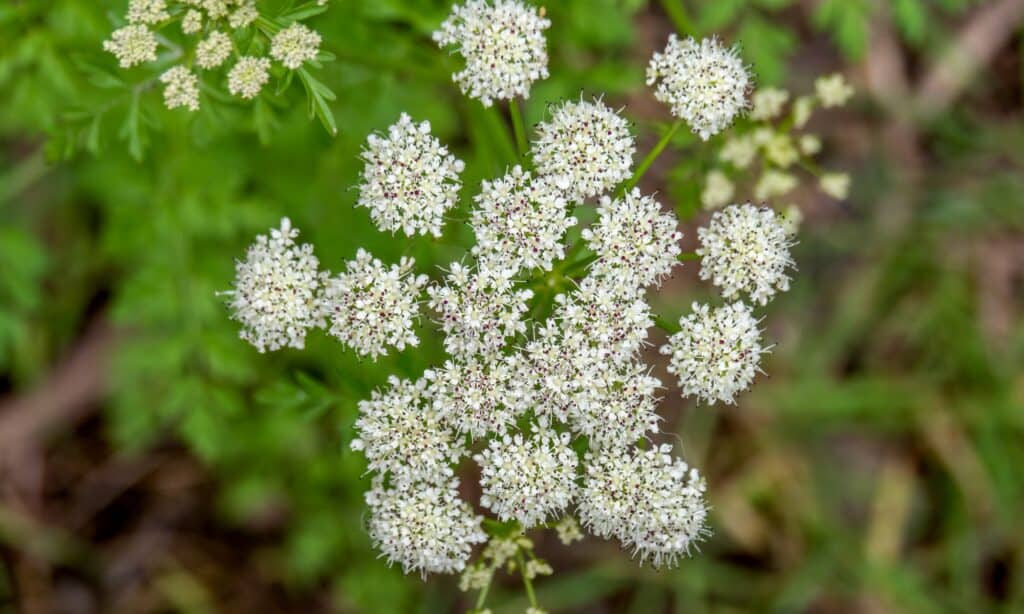
Like water hemlock, poison hemlock plants are highly toxic and can cause death if ingested.
©iStock.com/Goldfinch4ever
8. Houndstongue (Cynoglossum officinale)
The Houndstongue is a striking plant with grayish-green downy leaves and reddish-purple cup-shaped flowers. Many pollinators love houndstongue, but it’s one of the most dangerous plants in Idaho that’s primarily a threat to livestock. Unfortunately, houndstongue thrives in pastures where livestock roams and areas with moist soil like drainage ditches.
The good news is that most animals don’t bother houndstongue plants because they smell unpleasant. However, an accidental poisoning of livestock can happen due to grazing near these plants. But most often, livestock poisoning occurs when these noxious weeds get mixed with harvested hay used as their food.
Houndstongue Toxicity and Symptoms
The houndstongue plant contains highly toxic pyrrolizidine alkaloids. Symptoms of ingesting any part of the houndstongue plant could include nausea, vomiting, abdominal pain, convulsions, coma, and death.
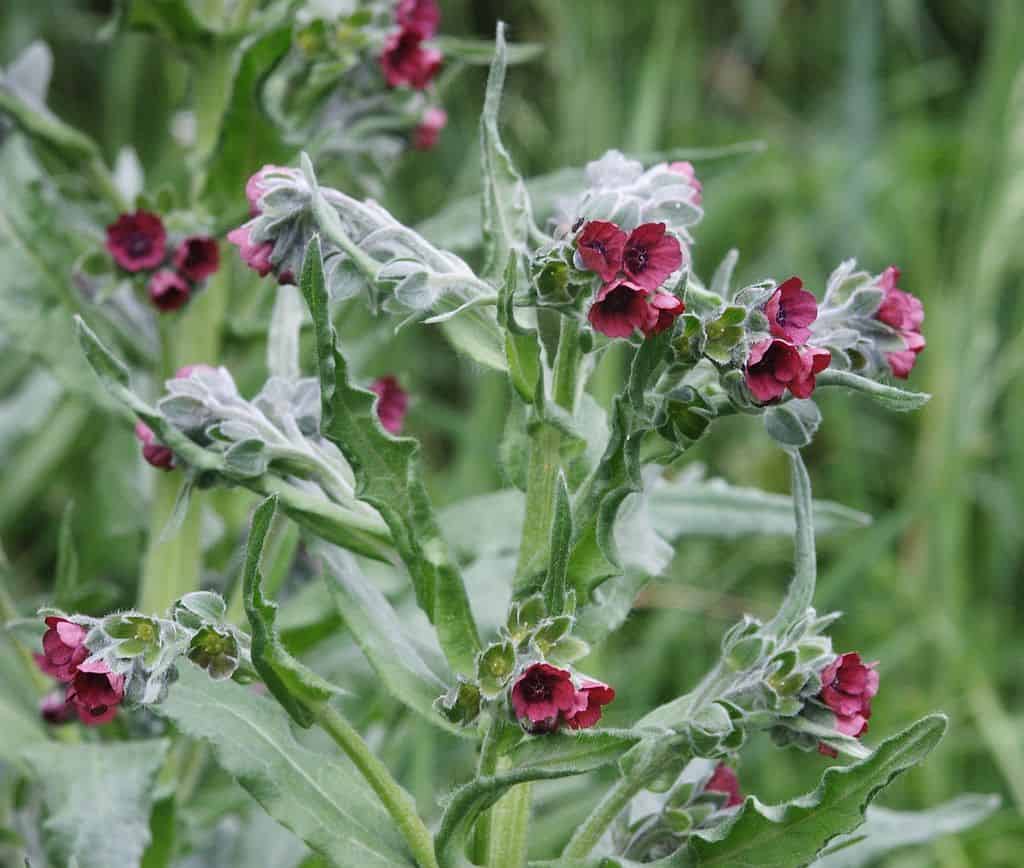
Pollinators love the houndstongue plant, but it is highly poisonous for humans and most animals.
©Bernd Haynold / CC BY-SA 3.0 – License
Learn to recognize the most dangerous plants in Idaho.
While exploring the natural beauty of Idaho, it’s crucial to be aware of the dangerous plants growing in its magnificent landscapes. Familiarizing yourself with these toxic plants and recognizing the symptoms of plant poisoning can help ensure your safety. And be aware of poisonous plants growing near where pets and livestock roam or graze. Sometimes the most dangerous plants pose a bigger threat to the animals in our care.
The photo featured at the top of this post is © Williammehlhorn at English Wikipedia, Public domain, via Wikimedia Commons – License / Original
Thank you for reading! Have some feedback for us? Contact the AZ Animals editorial team.







